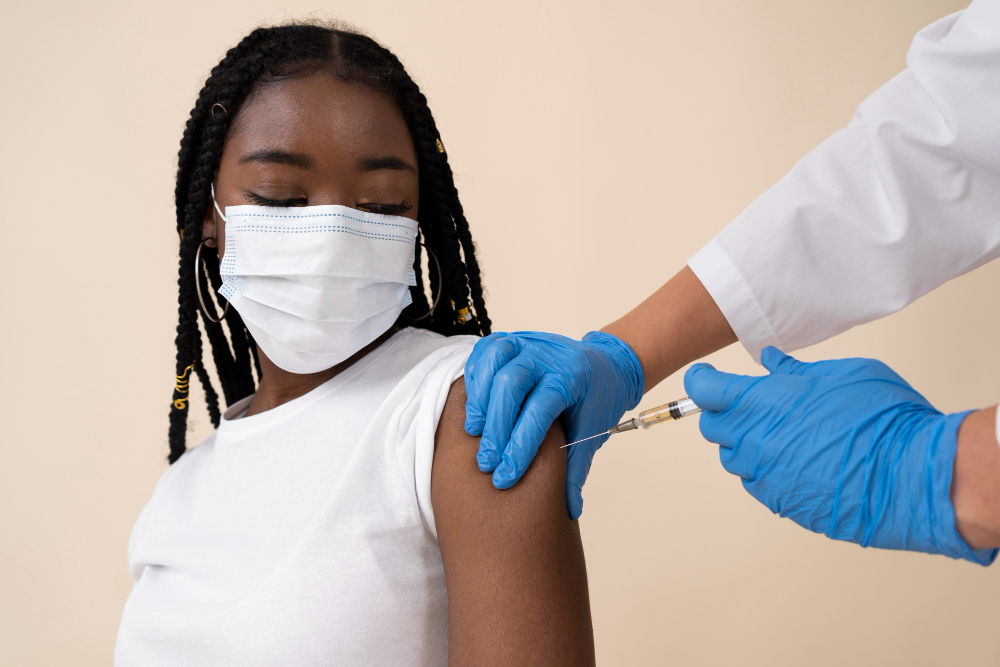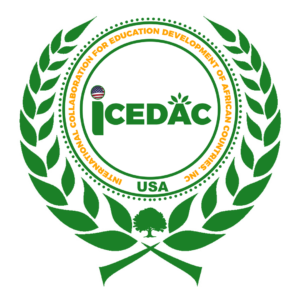OUR VISION
IN TERMS OF HEALTH
By Dr. HANS Stevy

It may seem trite to say that health “is all-encompassing”. Definitions from the World Health Organization (WHO) confirm this: “Health is a state of complete physical, mental and social well-being and not merely the absence of disease or infirmity”, it is “… a fundamental human right and a global social objective”, and “… a resource of daily life, not the goal of life. It is a positive concept, emphasizing the importance of social and personal resources as well as physical capabilities”. In this concept, the health status of individuals and populations depends not only on medical or personal factors, but also on cultural, social, economic and environmental factors such as: financial resources, employment, education, social support, nutrition, land use, the list goes on. Aristotle, looking for the right location for a city over 2,300 years ago, was already highlighting this type of concern when he declared that, “nothing is more important for health than that which is of daily and continual use, such as air and water” (Politics).
To this end, to improve the health of populations, it is not enough to act on individuals to adopt healthy lifestyles. All sectors of society must collaborate in a sustainable way on the factors that determine the socio-economic and physical environment of individuals and, ultimately, on the major orientations that shape society.
Yet this holistic approach to health, seemingly easy to share, does not yet seem to be widely fertilizing practices in developing countries. The great advances in health care achieved over the last few decades, and the socio-economic gains that have flowed from them, are under threat. Economic growth is being held back by lower labor productivity. What’s more, we’re all more exposed to epidemic outbreaks, which can spread rapidly in an interconnected world. The healthcare sector accounts for 11% of global GDP.
Effective and equitable financing of universal health coverage is essential for inclusive growth. For former World Bank Managing Director Kristalina Georgieva, “The beginning of the solution lies in budgetary decisions made by the countries themselves. Finance ministers must understand that investment in their citizens is essential to ensure the growth and prosperity of an economy that will increasingly value workers with high-level cognitive skills”. And according to American Hans Guy. A, “a healthier workforce is a more competitive and productive workforce”. In the light of all the above, ICEDAC USA is convinced that “a healthy population is the engine of a strong economy”, and believes that developing countries do not spend enough on the health of their citizens, a problem that lies not only in the lack of money, but also in the wastefulness or inefficiency of their health spending.
By 2030, the shortfall in funding to provide affordable, quality healthcare services will reach $176 billion a year in the world’s 54 poorest countries, compounded by the challenges of an ageing population and the rise in chronic non-communicable diseases.
Together, these factors are likely to cause healthcare costs to spiral upwards, further increasing the burden on the poor, and precipitating disastrous health and economic setbacks in the decades to come.
It is therefore in the interests of the whole world to guard against these economic threats by ensuring the health and well-being of all, if we are to eradicate poverty, contribute to economic growth and ensure the prosperity of communities. Moreover, health is an inalienable human right under the Universal Declaration of Human Rights. In fact, when people are healthy, they can realize their full potential, children are better able to learn, workers are more productive, and parents take better care of their children.
As health is a key indicator of a country’s progress, since a country with a healthy population is more likely to enjoy sustained growth, health is also essential to the stability of entire regions, since pandemics that transcend borders can have major social and economic repercussions on families and communities, With this in mind, the International Organization ICEDAC USA has set itself the goal of providing technical assistance and financial support to States in general, and developing countries in particular, in structuring and implementing their national public health policies, through initiatives such as :
Building “ICEDAC MEDIDAL MEWS” clinics to American standards in all regions/provinces where ICEDAC USA has a permanent office;
Helping governments optimize the way their public revenues are managed, by proposing strategies that have proved their worth, and that enable them to “get what they pay for”. For example, improving primary care and community health services will particularly benefit vulnerable people in remote regions/provinces;
Suggest taxing tobacco, alcohol and sugar-sweetened beverages to increase revenues while improving the general health of the population in each country;
Propose investments in efficient health systems at national level to generate positive spin-offs for donors, notably by limiting the spread of infectious diseases;
Propose innovations in healthcare investments, to ensure that healthcare does not plunge more people into extreme poverty… This list is non-exhaustive.
Considerable progress has been made in global health over the last few decades, but the resulting benefits are not distributed equitably between and within countries. More than six million children die every year, and almost 300,000 women die during pregnancy or childbirth when, in many cases, these deaths could have been avoided. This is the “WHY” behind our mission.
Working with developing countries in particular and its development partners, ICEDAC USA helps strengthen health systems to ensure that the most vulnerable and hard-to-reach people, especially women and children, receive essential services and medicines, and benefit from interventions. ICEDAC USA’s approach also includes training front-line community health workers and other key stakeholders, such as midwives. Partnerships are a key element of ICEDAC USA’s approach. Collaborating with other international organizations and civil society in each of ICEDAC USA’s partner states enables vital vaccines, nutritional supplements and other medicines and products to be delivered more effectively and efficiently. As a result, communities have the means to prevent and treat major diseases, including HIV/AIDS, tuberculosis, malaria, diarrhea, pneumonia, malnutrition and undernutrition, and other major causes of mortality and morbidity. This is the “HOW” of our mission.
EPIDEMICS
By OTTOU EMBOLO Lucrèce

Alarmingly, millions of people continue to die every year from curable diseases. Meningitis, polio, measles, yellow fever and diphtheria are making a comeback. Cholera, tuberculosis and malaria are on the increase, despite effective treatments. And hemorrhagic fevers such as Ebola are making a comeback.
The causes of the appearance and development of epidemics are multiple: climatic phenomena (drought, rainy season or floods) and conflicts that disorganize health systems, favor the multiplication of cases; the demographic explosion also generates endemic outbreaks, notably of cholera, due to insufficient hygiene and sanitation, the lack of drinking water and the promiscuity in which populations live.
With this in mind, ICEDAC USA has drawn up a number of strategies to combat epidemics and safeguard the health of those who suffer the full brunt of their effects.
ICEDAC USA’s strategies are based on two key elements: React and Organize.
It’s important to note: whatever the epidemic, two elements are crucial: speed of intervention and, because of the large number of people to be cared for simultaneously, logistics and organization of care.
International Collaboration For Education Development Of Africa Countries.Inc, as it is known, develops programs to protect populations that may be affected, but also to curb epidemics through appropriate action. The prevention of measles, yellow fever and meningitis epidemics requires mass vaccination. Cholera and dysentery can only be prevented by improving hygiene conditions, drinking water supplies and sanitation facilities. The treatment of all forms of epidemic requires the rapid establishment of temporary care structures, or the use of existing infrastructures to accommodate the sick.
Isolating the sick is an essential condition for preventing the spread of the epidemic: a “cholera camp”, for example, is a totally enclosed area where staff must comply with extremely strict hygiene rules, as humans are the main vector of the disease.
To achieve its leitmotiv, ICEDAC USA is committed to :
- Act on the basis of actions already undertaken by the current government (MINSANTE) and World Health Organization (WHO) data;
- Reduce the infant mortality rate and maternal deaths in health facilities and in the community, by providing assistance and ongoing training;
- Guarantee voluntary access to modern contraception for the population concerned;
massively mobilize women and girls to use modern contraceptives to limit contamination by STIs, STDs, abortions, etc.
ICEDAC USA’s prevention and technical control strategies include:
- Vaccination
- Raising public awareness
- screening
- Preventive pharmacological treatments
- Family planning
- Basic obstetric care.
Establishment of first referral centers for the care of sick children.
ABOUT VACCINATION
By NDJANKOU ARMELLE

For the United Nations, sustainable development also means good health and well-being for all, as clearly stated in the 17 Sustainable Development Goals. That’s why ICEDAC USA, International Collaboration for Education Development of Africa Countries.Inc, is joining forces with the new global immunization strategy to combat killer diseases and save 50 million lives by 2030. The process has already been set in motion by ICEDAC USA through the vaccination of Pygmy children against measles in the Kalumbia and Fatima Goupements on June 02 in the DRC, where there is a serious measles outbreak; and by obtaining authorization from the Ministry of Public Health in January 2022 to carry out vaccination and medical aid campaigns in certain areas such as Mbam-Sao-Bam in the Southern Region of the Republic of Cameroon.
Vaccination is the administration of a vaccine that confers active, disease-specific immunity, making the body resistant to the disease. For ICEDAC USA, this means fighting diseases such as tuberculosis, measles, diphtheria, yellow fever, poliomyelitis, rubella, tetanus, hepatitis B, whooping cough, vitamin A deficiency, cervical cancer, COVID 19, (this list is not exhaustive). ICEDAC USA’s humanitarian immunization aid is aimed at children and families in conflict zones, and those affected by interruptions in immunization services due to difficulties in supplying large numbers of vaccines, which very often depend on significant progress on several levels: political, financial, technical and logistical (supply and storage), as well as the constraints involved in obtaining authorization to import or use certain vaccines from national authorities, not to mention the costs associated with purchasing certain vaccines, particularly in countries that do not benefit from subsidized prices, and the obstacles associated with storing vaccines (respecting the cold chain).
In countries where immunization coverage is low, ICEDAC USA is committed to offering routine vaccines to children under five as part of its primary healthcare programs. Vaccination is a key element in ICEDAC USA’s response to epidemics (measles, cholera, miningite, etc.).
In the context of crisis, which often leads to population displacement and the rapid deterioration of living and health conditions, ICEDAC USA is committed to organizing vaccination and mass medical aid campaigns to reduce the burden of vaccine-preventable diseases and lower the risk of epidemics, notably measles, cholera and many others.
“WHEN IT COMES TO HEALTH, DON’T WE SAY THAT PREVENTION IS BETTER THAN CURE? “
In keeping with this maxim of Cardinal de Richelieu, and the understanding that follows from it, ICEDAC USA is committed to carrying out three types of activity in terms of vaccination: routine vaccination; preventive vaccination campaigns against epidemic risks; and reactive vaccination campaigns once an epidemic has been declared.
ABOUT DRUGS
By HANS KENNY JUNIOR

Access to quality medicines is essential to ensure the health of populations and meet the challenges of the right to health for all in developing countries. As an international NGO, ICEDAC USA is committed to strengthening health systems by creating the conditions for access to quality medicines.
Medicines and medical devices are not goods like any others. Their management and rational use are essential conditions for quality care and public health. Knowing and being informed is therefore the key to acquiring the right behavior when it comes to obtaining and dispensing appropriate medicines.
ICEDAC USA’s work is structured around the following missions:
- Structuring funding for actions aimed at improving access to quality medicines;
- The provision of quality medicines to the poorest countries in order to improve the health of their populations;
- Building “ICEDAC MEDICAL MEWS” clinics to American standards in countries where ICEDAC USA is represented;
- Alerting and raising awareness among public authorities and civil society through vaccination campaigns.
To achieve this mission, ICEDAC USA intervenes in :
- Strengthening pharmaceutical policies;
- Managing health product supply and distribution systems;
- Improving the prescribing, dispensing and use of healthcare products;
- Integrating pharmaceutical stakeholders into public health priorities.
Quality assurance is a very broad concept, covering all issues that individually or collectively influence the quality of a product. It is the set of measures taken to ensure that the quality of pharmaceutical products conforms to their intended use. The international organization ICEDAC USA ensures product quality and is involved in all key activities in the product supply chain.
SUPPLY ASSURANCE AND QUALITY :
Precautions taken by ICEDAC USA :
– Raw materials
The quality of the raw materials used to manufacture a pharmaceutical product is an essential element in the quality of the finished product. Consequently, ICEDAC USA ensures the origin and quality of raw materials, active and inactive components, which must be developed in such a way as to ensure that they meet regulatory and international quality standards.
- Quality control
ICEDAC USA, ensures that the finished pharmaceutical product (FPP) undergoes in-house quality control by the manufacturer prior to submission for approval. Then, once the product has been approved, each batch placed on the market must have a certificate of analysis. In addition, when the manufacturer has been selected for procurement, the pharmaceutical product must undergo random pre- and post-shipment inspections by the procurement agency, through an independent inspector using a WHO pre-selected quality control laboratory. The pre- and post-shipment checks enable the international organization ICEDAC USA to ensure that the pharmaceutical product complies with the standards applied by the supply agency and its regulatory requirements.
Regulatory approval
The pharmaceutical product must obtain regulatory approvals from the Ministry of Health in both the country of origin and the country of destination, to demonstrate that it meets acceptable standards of safety, efficacy and quality. In addition, the regulatory approval of the WHO pre-selection and ICEDAC USA ensures the recommendation of a purchasing committee of experts, while ensuring that the efficacy of the pharmaceutical product is guaranteed.
Transport and distribution
The pharmaceutical product must be transported and distributed in such a way as to maintain appropriate storage conditions: for example, controlled temperature, protection from environmental conditions. ICEDAC USA supports the logistics system and ensures product access and availability without compromising quality.
Storage
The pharmaceutical product is stored under appropriate conditions, determined on the basis of the results of stability testing, in order to avoid any change in the quality, efficacy and safety of the final product to be administered to or consumed by the population.
